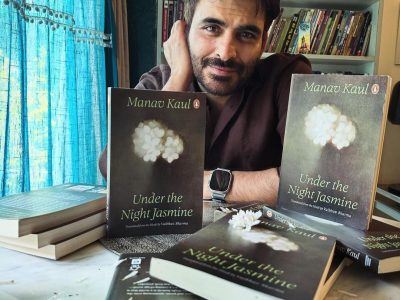In spite of the warnings of the Supreme Court, Delhiites continued to burst illegal crackers – that too beyond the prescribed time limit, resulting in aggravated pollution levels
On the night of October 27, on the auspicious occasion of Diwali, Bhim Singh Rawat, who lives in Narela had a torrid time in his home. “Crackers were bursting left, right and centre. I couldn’t even rest peacefully inside my home”, he says, as he complained of loud noises of string bombs burning till late night.
The Supreme Court in 2018 had passed a judgement, wherein it stated that crackers can only be burst on Diwali or any other occasion in a two-hour timeframe from 8-10 pm. This year, they also ordered that only green crackers can be sold and burst, thus deeming the sale and usage of all other crackers as illegal.
However, the picture in Narela’s Indira Colony, was quite different as according to many residents , including Rawat, crackers banned by the Supreme Court were bursting well past the scheduled timeframe.
“Around 10.30 PM I dialed 100 to get the bursting of crackers stopped — since it had crossed the permitted time limit. To my surprise even police was not aware of time limits and types of crackers restricted”, says Rawat. “My friends also told me that banned crackers were being sold late in the evening stealthily”, he adds.
“While I was returning home from office, I saw two shops open side by side in the area, and they were selling all sorts of banned crackers in the open”, says Ashwani Khatri, another resident of the area. Khatri adds that he was equally surprised to see scores of people lined up in front of the shops buying these crackers.
The next morning, the same shop, Khatri says, was open, and again selling the banned crackers brazenly. It was then that the residents decided to take action. Khatri and Rawat, along with several other residents went inside the shop, and forced the owners to stop selling. They then called the police, who arrived on the scene and forced them to shut shop. They retrieved a large stock of crackers from their basement.
“We were shocked to see that even the police said that they can’t close the shop because they had the appropriate licence to sell crackers, and had no idea about the Supreme Court order”, says Khatri.
Capital scene
The incident in Narela was certainly not a one-off occurrence. According to data obtained from Delhi Police, 210 people were arrested on the night of Diwali for violating Supreme Court rulings on the selling and bursting of firecrackers.
Of these, 166 people were arrested for bursting crackers and 44 for the possession and sale of illegal crackers. The data also states that 371 cases were registered, and 940 calls were made to the number 100 for complaints pertaining to firecrackers.
Dwarka registered the maximum number of cases at 75, with West and Northeast Delhi following suit with 56 and 54 cases respectively.
The largest number of arrests, however, took place in the North East District (22), while Dwarka made just five arrests from the 75 cases that were registered.
The data also shows that the police seized a jaw-dropping 3,764.75 kg of crackers on Diwali day, out of which 1,321.9 kg alone came from the North East district.
During the festive season, before the day of Diwali, Delhi Police conducted a drive across the city, wherein they registered 461 cases. Of these, 261 people were arrested and 9,758.04 kg of illegal crackers were seized
The effect
Pollution levels in Delhi showed a significant spike, especially post Diwali. The AQI, which indicates the amount of PM 2.5 pollutant in the air, on October 28, the day after Diwali, reached an average of 358 – the highest this year. Anything above 300, according to standards, is deemed extremely hazardous.
On Diwali night, the Central Pollution Control Board stated that PM 2.5 levels increased by five times in the Capital. Weather forecasting app Accuweather showed that the AQI in Gurugram was 1,788 on the night of Diwali.
Though the AQI remained around 300 — mostly below it — even a week before Diwali, the levels certainly spiked post the festivities. On October 22, AQI in the Jahangirpuri area was 261, which jumped to 375 on October 28. The level was well above 500 in the early hours of the morning.
This is evident, as the thick haze and cover of smog in and around the capital, has seemingly increased post Diwali.
“As I was going to office the day after Diwali, I felt uncomfortable, as my throat and nostrils were burning”, says Sombuddha Chaudhury, a resident of Rajinder Nagar.
Mahesh Palawat, chief meteorogical officer at Skymet Weather Services, says that the sudden spike in pollution is largely due to the burning of crackers, and it will continue to be like this for some time, until the north-west wind blowing in the city increases to 15-20 miles per hour. As a result, pollutants will be scattered. “It’s not going to be back to normal but will hover in the category of moderate to poor at different places”, he says.




